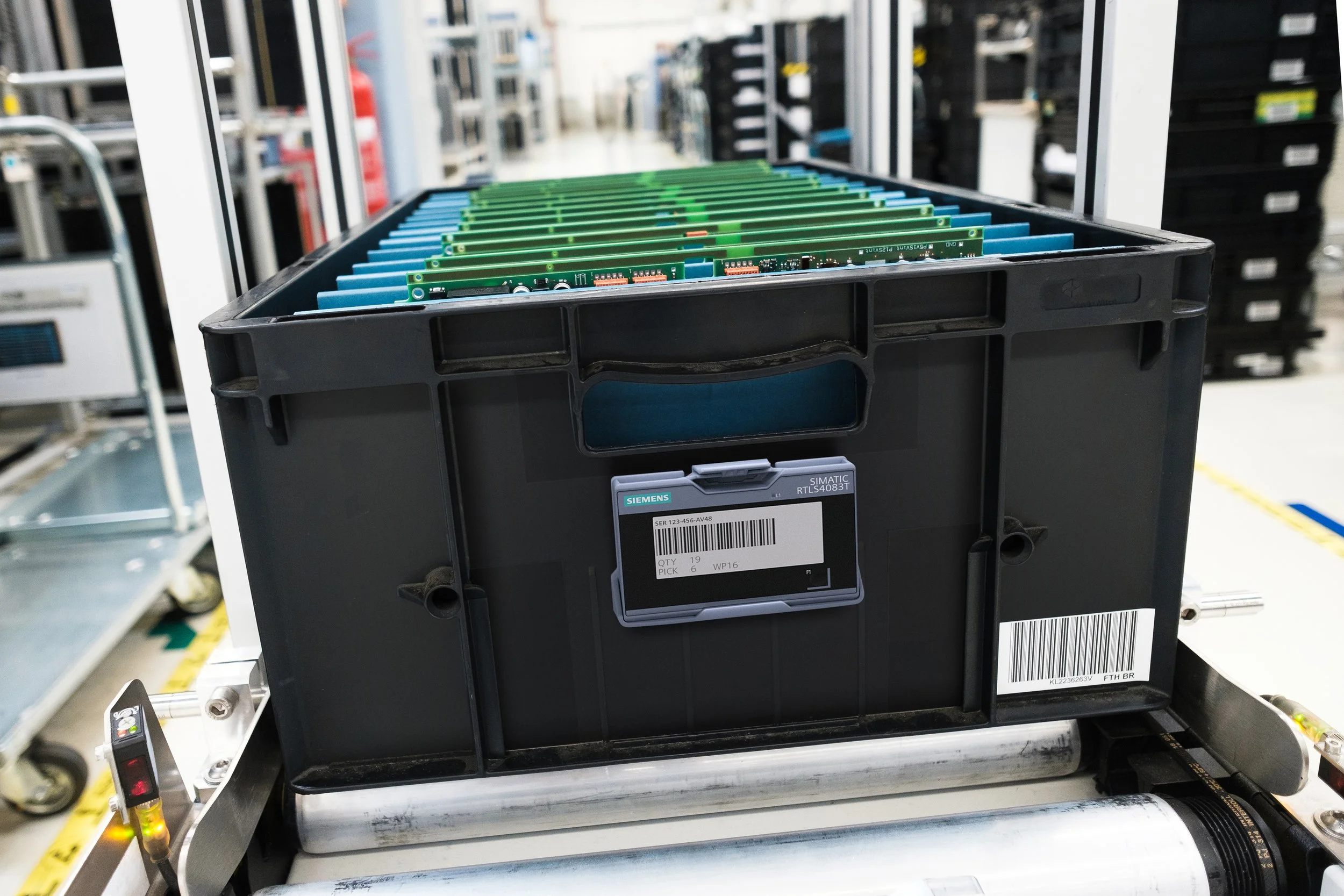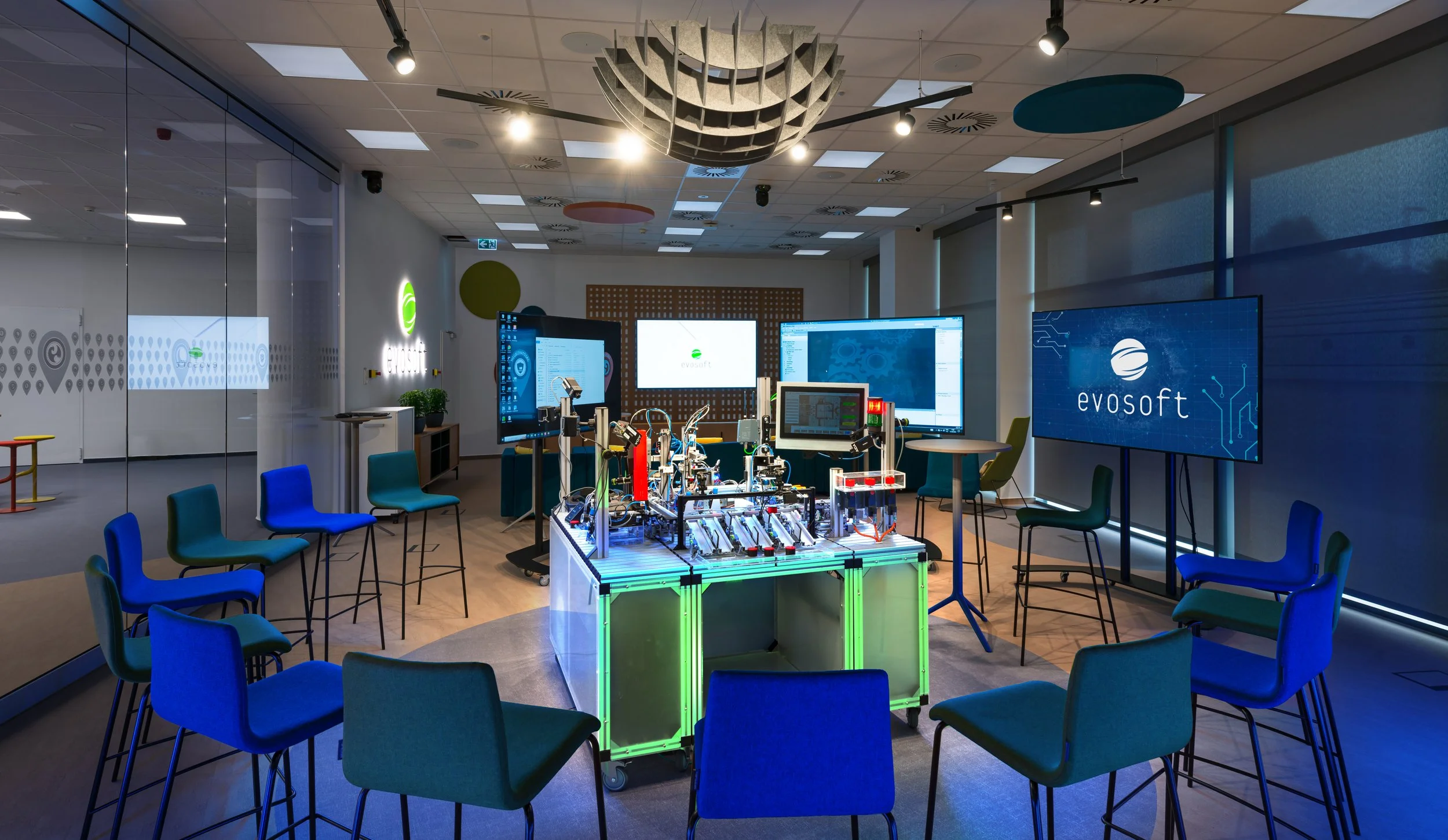Who? What? When? Where? Why?
Both share a curiosity that shows up in the same kinds of questions: Who? What? When? Where? Why? For a child, these questions come from a natural sense of wonder. But for engineers, the answers to these questions directly impact production processes, performance, and ultimately, the company’s profitability. And perhaps even more important than the answers themselves is how quickly they arrive — the time between when information is generated on the production line and when it’s processed can make all the difference.
Siemens RTLS (Real-Time Locating System) technology helps bridge this gap. It’s a real-time location tracking system that uses ultra-wideband (UWB) technology to precisely monitor tools, materials, and vehicles in industrial environments.
The system consists of two main physical components.
Transponders (tags) – these are active UWB transmitters that send signals required for precise location tracking. They can be attached to objects, vehicles, or even people. Thanks to the ePaper functionality, transponders equipped with a display can show any type of data — whether text, barcodes, or QR codes — and this content can be updated in real time.
Anchor units (receivers) – these are fixed devices installed throughout the facility that receive signals from the transponders and relay them to the central system (MES).
However, these devices alone aren’t enough to deliver the benefits mentioned above. To unlock their full potential, they need to work in close coordination with a Manufacturing Execution System (MES), which can turn the raw RTLS data into actionable, production-specific insights.
Real-time tracking
The MES provides a live view of where each workpiece is on the production line. It automatically updates the production status based on its current position.Automatic workflow initiation
When a workpiece enters a designated zone (e.g., a welding station), the MES can automatically trigger the corresponding operation or documentation.Quality assurance and traceability
The MES logs when, where, and on which machine each production step takes place. This makes it easier to trace errors and supports audit and compliance processes.Material and tool management
The system monitors whether raw materials and tools are in the correct location. This helps prevent errors — for example, if the wrong tool is used on a workpiece.Control of mobile robots and AGVs
The MES can dynamically replan material handling routes based on RTLS data. This is especially valuable in lean manufacturing or just-in-time systems.
A setup like this — integrating MES and RTLS — can also be seen in the demo room at evosoft Hungary Kft., where Siemens RTLS technology is combined with our custom-developed MES software built on Mendix.
Mendix Low-Code Development is a platform that enables rapid application creation with minimal manual coding. The term 'low-code' refers to the use of visual tools and drag-and-drop functionality, allowing developers — and even business users — to build applications with very little actual coding. This approach makes it possible to integrate the power of Siemens RTLS into an MES system quickly and efficiently, with minimal coding effort.
Our software is capable of connecting to the preconfigured RTLS system and establishing the high-speed TCP connection required for data flow. Once connected, the MES displays the configured transponders on the floor plan of our demo room.
Our Digital Experience Room (DEX)
At this stage, the visualization is entirely driven by data from the anchors and transmitters installed in the demo area. The floor plan also shows that we can define various zones and their boundaries (GeoFences) and detect when these are crossed. The system can notify users in real time when a transponder moves from one zone to another. This functionality is especially useful for monitoring forklift operating areas — providing immediate alerts if a forklift or the goods it’s carrying leave their designated zone.
We were also able to display additional information on both the digital interface and the physical field device.
On the digital MES side, it offers much greater transparency for production engineers, thanks to the availability of real-time location data on tools, products, and vehicles—combined with the production data accessible through or stored in the MES.
By displaying additional information at the field level—such as text, barcodes, or QR codes—this kind of system can help operators work faster and more accurately. The MES can instantly communicate the required tasks, and operators can provide feedback using the buttons on the transponder.
With the solution we presented, we were able to implement the following functionalities in our office demo space. Thanks to the flexibility of the Mendix platform, these features can be easily adapted to various industrial environments:
Real-time tracking of production components and material flows
Creation of digital twins for physical processes
Implementation of a paperless and flexible infrastructure
Are you really curious?
Discover the solutions that evosoft provides. More blog articles about our solutions.
Let's get in touch, contact us.
If you are interested in our solutions and services, please send a message to our Program Manager.
Gábor Kozó - Program Manager (LinkedIn)


